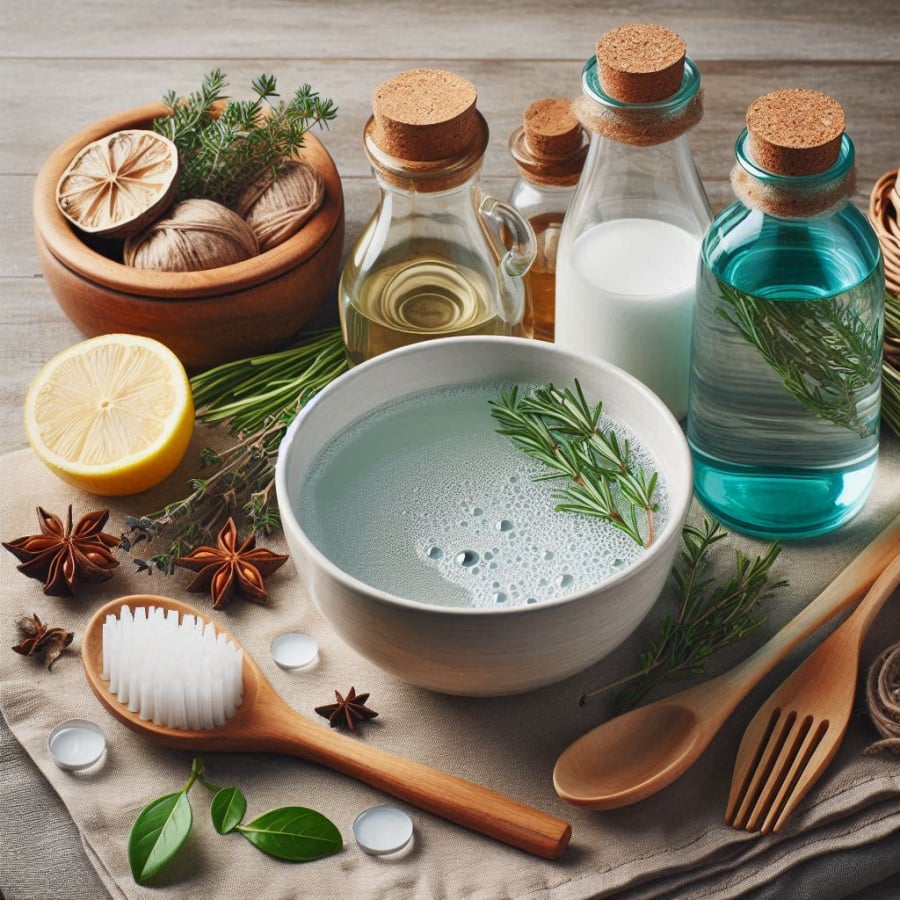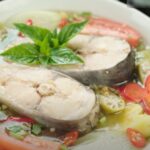White vinegar and dish soap are two common household products that can be combined to create a useful mixture with surprising cleaning capabilities.
White vinegar, known for its strong acidic properties, is highly effective in cleaning. When combined with dish soap, it creates a powerful solution that helps remove and soften stains, especially grease. The acidity in vinegar not only aids in cleaning but also has the ability to kill bacteria and mold, thus maintaining a clean and safe living environment.

White vinegar is known for its strong acidic properties
Here are some specific uses for the mixture of white vinegar and dish soap that you can apply:
Cleaning Eating Utensils
Over time, eating utensils like bowls and chopsticks can absorb grease, food odors, and stubborn stains. To effectively address this issue, combine white vinegar with dish soap. This method can also be applied to other utensils such as cutting boards, baby bottles, pots, and pans, ensuring they remain clean and safe for your health.
Instructions:
– Mix white vinegar with a sufficient amount of dish soap in a basin of warm water.
– Soak the dirty bowls, chopsticks, and plates in the solution for about 5 minutes.
– Use a soft cloth or sponge to scrub the utensils.
– Rinse with clean water to finish the cleaning process.
This method effectively eliminates odors and grease, providing you with a cleaner and safer dining space.

This method effectively eliminates odors and grease
Odor Removal for Cooking Utensils
Unpleasant odors from cooking utensils like pans, pots, microwaves, grills, and rice cookers are a common issue faced by many homemakers. The unpleasant smells from grease, burnt food, or other dirt can make cleaning challenging. However, you can effectively address this situation by using a combination of white vinegar and dish soap.
Instructions:
– Prepare an odor-removing solution by mixing half a cup of white vinegar with a few drops of dish soap in a bucket of warm water.
– Wipe down surfaces: Use a soft cloth or sponge dipped in the solution to clean cooking utensil surfaces like pans, pots, microwaves, refrigerators, and other appliances.
– Tackle stubborn stains: For utensils with long-standing grease stains, apply the solution directly to the stains and then scrub with a brush or cloth.
– Rinse: Use a damp cloth to wipe down the utensils again, removing any remaining soap and vinegar scent.
– Dry: Finally, use a dry cloth to polish the utensils, leaving them shiny and odor-free.
This method not only eliminates odors but also leaves your kitchen space clean and comfortable, enhancing your dining experience.

This method leaves your kitchen space clean and comfortable
Efficient Kitchen Cleaning
The kitchen floor and countertops are prone to dirt and grime from daily cooking and living activities. Dust, grease, food stains, and stubborn marks can make your kitchen look unhygienic. To effectively tackle these issues, you can use a simple mixture of white vinegar and dish soap for cleaning.
Instructions:
– Start by mixing a cup of white vinegar with a few drops of dish soap in a bucket of warm water. If your floor or countertops are extremely dirty, you can add a little more vinegar for a stronger solution.
– Dip a mop into the solution and evenly clean the floor or tiled surfaces. This mixture will help loosen stubborn stains and leave the surfaces clean.
– Next, use a damp cloth dipped in the solution to wipe down the countertops, paying extra attention to areas prone to grease buildup.
– After cleaning, let the solution sit for a few minutes. This allows it to work on the stains more effectively.
– Finally, use a clean cloth dampened with water to wipe down the surfaces again, ensuring the complete removal of soap and vinegar residue.
If you still notice odors in your kitchen after cleaning, place a bowl of white vinegar in the corners of the kitchen or inside the refrigerator. White vinegar is excellent at absorbing odors, leaving your kitchen smelling fresh and clean.
With these simple tips, you can easily maintain a clean and pleasant kitchen.
The Secret to a Perfect Fish Soup: Four Tips to Eliminate the Fishy Smell
When cooking fish soup, there are a few key things to keep in mind to ensure a delicious, well-balanced dish. The goal is to create a soup that is free from any fishy odor, with firm, intact fish meat. A truly skilled chef can transform this simple dish into a masterpiece with a few subtle techniques.




































